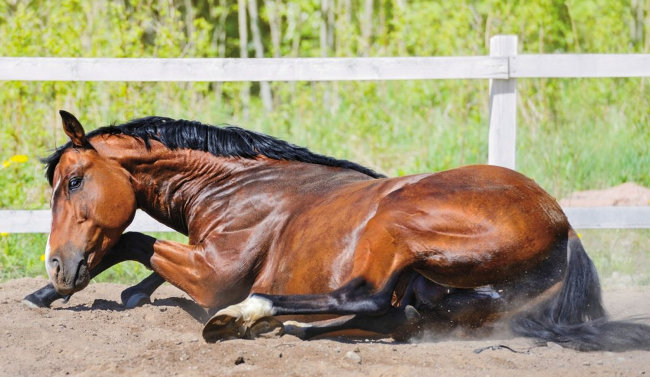Search
Featured post
How to Manage Exertional Rhabdomyolysis (Monday Morning Disease) in Horses.
How to Manage Exertional Rhabdomyolysis (Monday Morning Disease) in Horses.
Image by Renata S. Scalco
Clinical signs of exertional rhabdomyolysis in horses may include stiffness, reluctance to move, muscle pain or swelling, and dark urine due to the presence of myoglobin. It is important for horse owners and trainers to be aware of these signs and seek veterinary assistance immediately if they suspect their horse is suffering from this condition.
Prevention of exertional rhabdomyolysis in horses involves proper conditioning and training protocols, including gradual increases in intensity and duration of exercise to avoid sudden strain on the muscles. Adequate warm-up and cool-down periods, regular turnout, and a balanced diet rich in electrolytes and antioxidants can also help support muscle health and prevent episodes of rhabdomyolysis.
Treatment for exertional rhabdomyolysis in horses may include rest, anti-inflammatory medications, and intravenous fluids to support kidney function and flush out myoglobin from the bloodstream. In more severe cases, hospitalization and intensive care may be required to monitor and manage complications such as acute kidney injury.
In conclusion, exertional rhabdomyolysis can be a serious and potentially life-threatening condition in horses, but with proper management and preventive measures, it can be effectively controlled. Horse owners and trainers should be vigilant in monitoring their horses for signs of muscle injury and take proactive steps to prevent and address exertional rhabdomyolysis to ensure the health and well-being of their equine companions.
Search on Wikipedia
What should you do if your Dog is Panting too much?
Labels
Most Popular
What should you do if your Dog is Panting too much?
Tags
- animal health
- antibiotic abuse
- Antimicrobial resistance
- antimicrobial stewardship
- Brooding
- cat
- cat myths
- chicken
- cow
- dairy
- deworming
- dog
- dog care
- dog ethics
- dog grooming
- dog health
- Dog safety
- Dog training
- Dogs
- dress
- exercise
- exertional rhabdomyolysis
- Food safety
- hoof care
- hoof trimming
- Horse
- horse care
- horse disease
- Meat inspection
- Meat safety
- milking
- myths
- parvovirus
- pet
- pet care
- pet care.
- pet health
- Pig farming
- Pigs
- Poultry
- poultry farming
- poultry feed
- tick infestation




0 Comments